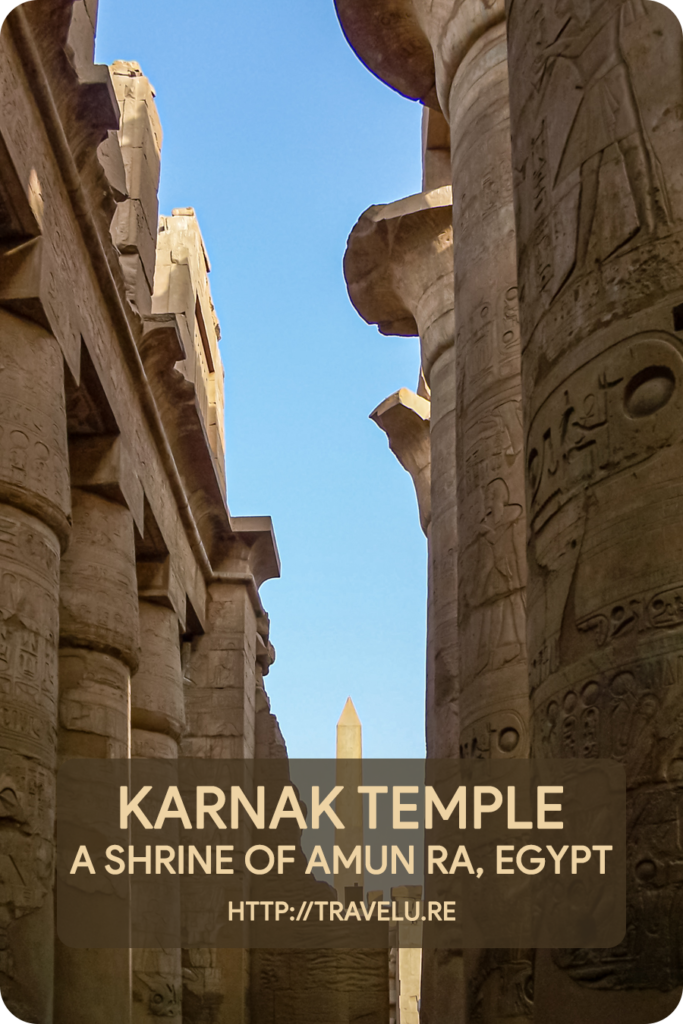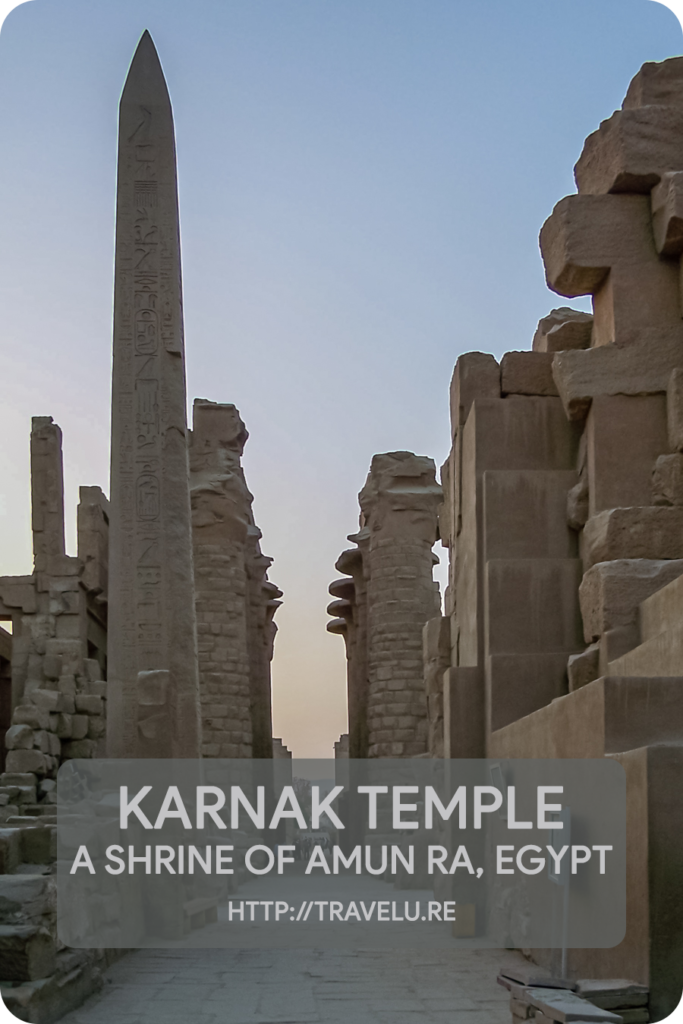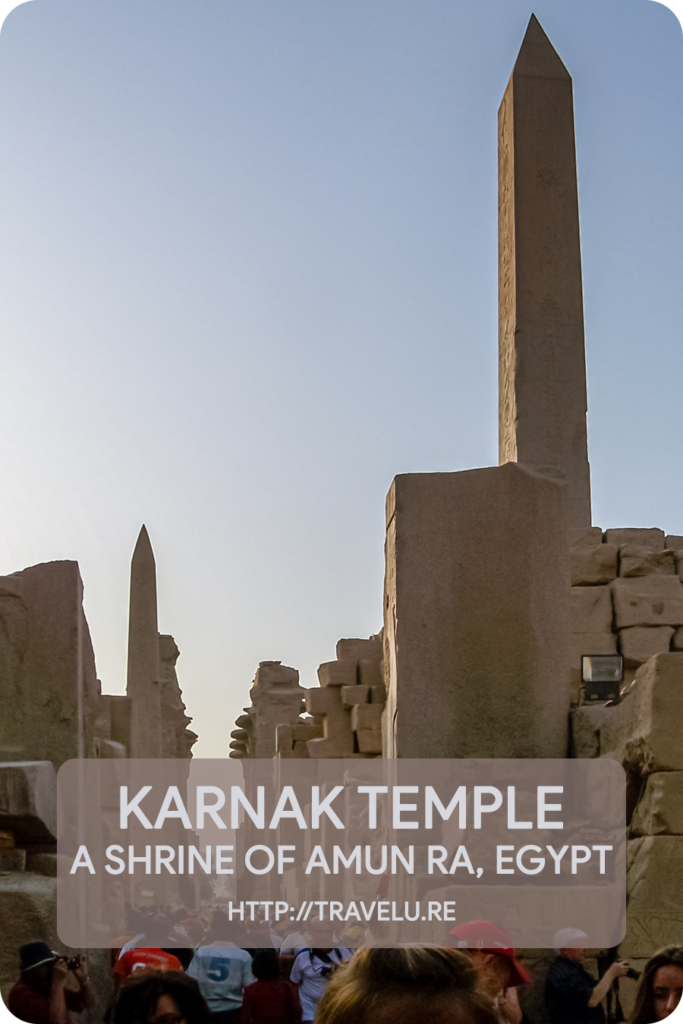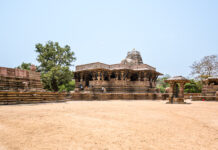Karnak Temple – A Shrine of Amun Ra
Let’s cross over to Luxor’s east bank. In my recent posts, you read about the temples of Horus, Isis, Sobek, Khnum, and more, but none of those temples was for the principal deity of ancient Egyptians – Amun Ra. Spread over 100 hectares, Karnak Temple qualifies as one of the largest temples of ancient Egypt. And its major shrine houses the deity-in-chief, Amun Ra.

Over four thousand years ago, they had conceived Karnak as a modest temple. Its construction lasted two thousand years until Romans annexed Egypt. During these two millennia, the area of the temple grew. Not all the activity was about building. Some of it included tearing down and changing structures.
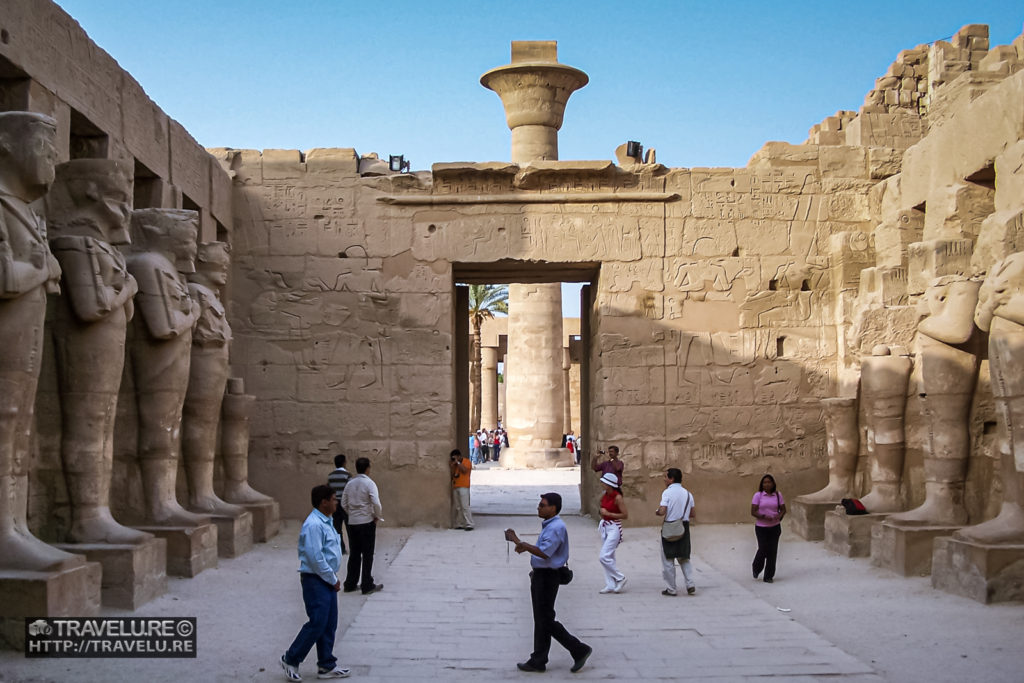
Temple Layout
Surrounded by a high peripheral wall, the Central Sector that takes the largest amount of space is reserved for Amun Ra. There are two smaller precincts to its west – the northwestern one dedicated to Montu, yet another falcon-headed god, and the southwestern, for the goddess Mut, Amun Ra’s wife. On the east, there is an area dedicated to Aten, the sun disc. Much of that has been destroyed by design.

Over the centuries, different dynasts from Senusret I to Ptolemy VIII erected eight sets of pylons. A sacred lake marked the southeast of the site. With time, the rulers started many complex rituals, and as they evolved, it guided much of the layout and the alignment of its processional galleries. In strict orientation terms, the alignment of the Karnak Temple and its galleries faced those of the Mortuary Temple of Hatshepsut across the Nile – a joint-contribution by Hatshepsut and Tutankhamun.
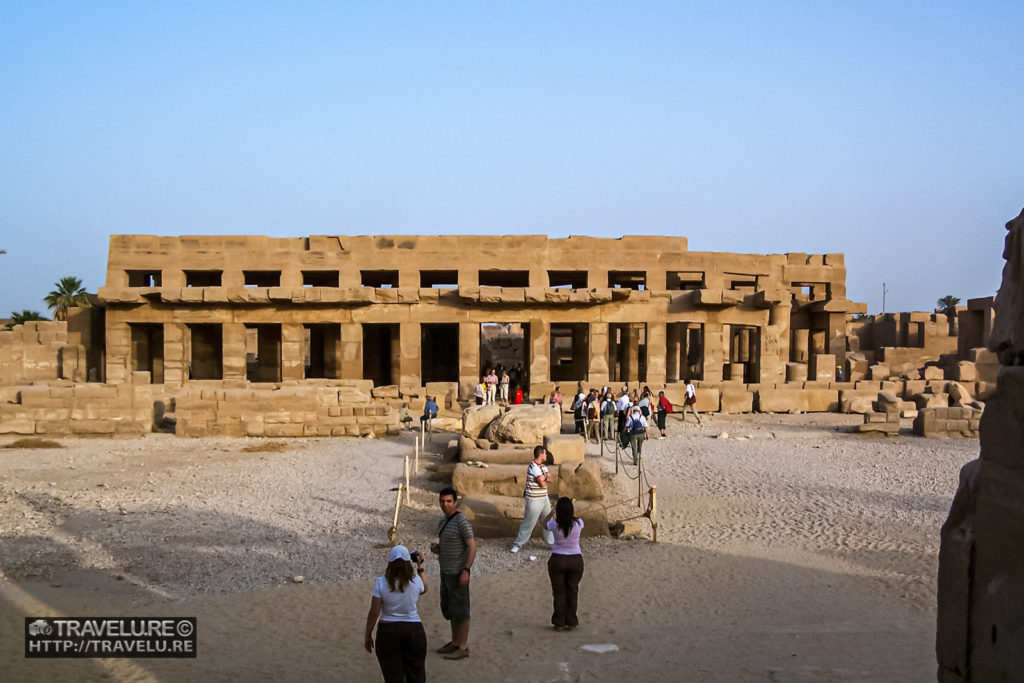
Temple Architecture
Each king left his unique imprint on this monumental heritage gem. A massive complex, it boasts multiple temples, chapels, hypostyle halls, obelisks, statuaries, and more. One can see most of the Egyptian mythological iconography here that includes heiroglyphs, sphinxes, statues of ram-headed god, pharaohs, guards, lions, etc. Like in most ancient temples in Egypt, the girth of the pillars in the complex inspires awe, and so does the workmanship. The capitals of these pillars range from solid blocks to delicate florals.


This temple stands apart courtesy of its massive obelisks, each weighing a few hundred tonnes. During our visit, the guide explained the process of how, without cranes, the workmen erected those obelisks. It was a magnificent use of the lever principle. To date, an unfinished obelisk lies here, complete with hieroglyphs and reliefs. That can lead us to the logical conclusion: the temple was never completed.

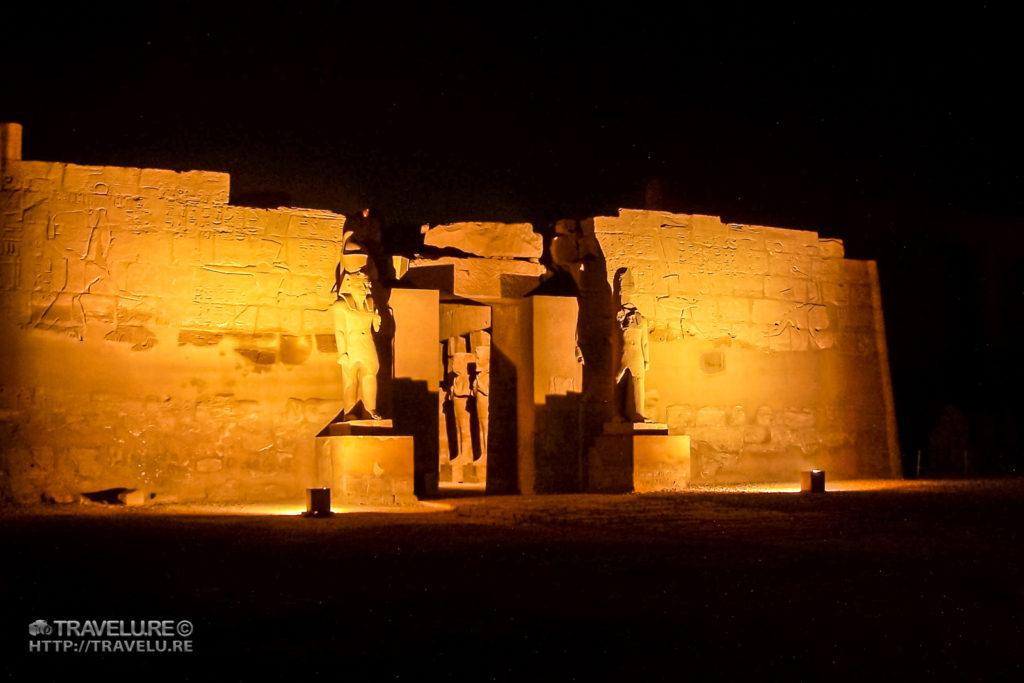
Singh is King, a Bollywood hit, used this temple complex with its beckoning architecture in a peppy song-and-dance sequence. And that is not the only film crew that shot there. Karnak temple has provided an attractive setting for some big banner Hollywood movies too.
Next week, let us hop over from this mysterious civilisation of the dark continent to the regal land of chateaux.



